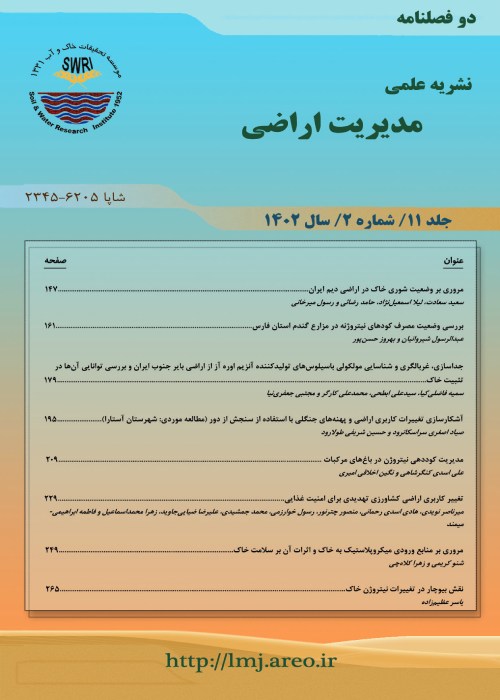Social and Ecological Impacts of Agricultural Land Use Change
Author(s):
Article Type:
Research/Original Article (ترویجی)
Abstract:
Agricultural land use change is one example of the cases in which the free market economy has failed to protect the environment. It stands only second to the current water shortage as the major problem of agriculture in present-day Iran. The problem of land use change has led to the degradation or even devastation of large portions of the cultivable area to pose serious threats to food security, self-sufficiency, and sustainable employment in rural communities with obvious grave social, cultural, and economic consequences. Protecting agricultural lands has become even more difficult due to the development pressures of both tourism and industry; the imminent water crisis; the declining agricultural productivity due to soil degradation; changes in rural lifestyle; and the absence of deterrent laws and the bureaucratic corruption. Study has revealed that low income levels, rising production costs that make agricultural production uneconomical, inefficient agricultural practices, difficulties in product marketing and sales, lack of funding, unrealistic increases in property prices, and increasing cost of living are important factors underlying the changes in land use. It has also been established that land use change causes such irreversible environmental damages as soil erosion and desertification; natural disasters including landslides, flooding and climate change, reduced vegetative cover, reduced biodiversity, and loss of soil fertility with such adverse environmental consequences as soil and water pollution by unauthorized industrial pollutants, especially along the rivers, coastal areas, and areas next to drinking and irrigation water resources. All of these ultimately lead to the gradual annihilation of agriculture that poses a serious threat to food security. In addition to its environmental impacts, land use change causes structural changes in the social, economic, and physical structures of rural areas. The dire consequences include income inequality and engraved social injustice and discrimination in rural areas, frustration and conflicts at the household level, cultural confrontations, loss of social and individual identity, increased tendency for immigration, reduced motivation for long-term agricultural planning, reducing numbers of sustainable and productive jobs, and ultimately irreversible social and cultural consequences. The present article addresses some of these aspects in detail.
Keywords:
Language:
Persian
Published:
Journal of Land Management, Volume:5 Issue: 2, 2018
Pages:
81 to 97
magiran.com/p1809775
دانلود و مطالعه متن این مقاله با یکی از روشهای زیر امکان پذیر است:
اشتراک شخصی
با عضویت و پرداخت آنلاین حق اشتراک یکساله به مبلغ 1,390,000ريال میتوانید 70 عنوان مطلب دانلود کنید!
اشتراک سازمانی
به کتابخانه دانشگاه یا محل کار خود پیشنهاد کنید تا اشتراک سازمانی این پایگاه را برای دسترسی نامحدود همه کاربران به متن مطالب تهیه نمایند!
توجه!
- حق عضویت دریافتی صرف حمایت از نشریات عضو و نگهداری، تکمیل و توسعه مگیران میشود.
- پرداخت حق اشتراک و دانلود مقالات اجازه بازنشر آن در سایر رسانههای چاپی و دیجیتال را به کاربر نمیدهد.
دسترسی سراسری کاربران دانشگاه پیام نور!
اعضای هیئت علمی و دانشجویان دانشگاه پیام نور در سراسر کشور، در صورت ثبت نام با ایمیل دانشگاهی، تا پایان فروردین ماه 1403 به مقالات سایت دسترسی خواهند داشت!
In order to view content subscription is required
Personal subscription
Subscribe magiran.com for 70 € euros via PayPal and download 70 articles during a year.
Organization subscription
Please contact us to subscribe your university or library for unlimited access!


